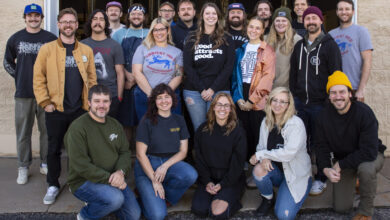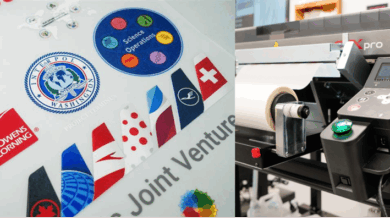Are you stuck in the land of using the same five fonts over and over again? Get ready to break out of the same-old, same-old, and up your decorating game with these typography tips from printers and designers.
“Typography’s power rests in the emotional memory of human beings,” says Pat Achilles, a veteran illustrator and graphic designer based in Doylestown, Pennsylvania. “Letter shapes can express strength, nostalgia, love, sorrow, propriety, and confusion — the gamut of emotions, all based on established lettering styles that people associate with the places and feelings they’ve encountered with that typeface before.”
The most successful T-shirt designers understand (and power-ize) fonts and typography hierarchy for their clients. “A good graphic starts with a good font,” says Craig Mertens, general manager at Graphics Flow. “The easiest way to wreck a design is poor font usage. Apparel-centric fonts that model retail fashion trends are critical. You can’t just slap a desktop publishing font into a T-shirt design and expect it to look good. Font selection is critical.”
Here’s what you need to know to up your typography game:
1. Take visual cues from the artwork
Achilles says that if the final design includes graphics, she makes sure the typography harmonizes with it — or, if the desired effect is a visual punch, contrasts appropriately to it. “If there’s no artwork then the grouping of words itself has to form a ‘shape’ that I design by size, placement, and color,” she says.
2. Stick to two levels of hierarchy, unless you need to make an exception
Achilles usually designs using no more than two levels of hierarchy: the main idea and a subhead. “I stick to the rule of two typefaces at most for a standard design — unless the whole point of the idea is to be eclectic, chaotic or ransom-note-ish,” she says. “Generally, I choose one serif and one sans-serif face.”
3. Show the client an as-close-to-done proof
“If the design will be on a T-shirt, print it out the exact size it’ll be, and place it on the shirt color it’ll be printed on, so your client can visualize it completely,” Achilles recommends. “Similarly, if you need to resize the image or logo for a business card, make sure the client sees all the comps reduced to a 2″ X 3.5” size.”
4. Avoid unreadable fonts
“A ‘cool’ font doesn’t provide any visual value if you can’t read the copy, especially in small sizes,” Mertens states. “Also, mixing multiple serif or sans-serif fonts within a design will compete with each other, rather than complement, for instance, like a block font and a script font. Two similar sans-serif fonts in a design will also look out of place, so you should avoid that pairing.”
5. Don’t start with the font
“Good designers design,” Marshall Atkinson, business coach at Atkinson Consulting and Shirt Lab, says. “The font is just a design tool. If you’re starting with the font, you’re doing it backward. It all comes down to up-front planning.”
Atkinson goes a little old school when he plots out designs. “There’s no idea key on your keyboard,” he quips. He draws out a quick sketch to figure out the design composition before searching for fonts.
“Good design basics are a universal language in how we read,” he adds. “That’s why visual hierarchy matters. Don’t make the design fit the font. If you have lots of chaos with your type arrangement, hard for the viewer to absorb.”
6. Kerning, kerning, kerning
“Kerning is one of the biggest problems for new designers,” says Carolyn Cagle, owner of Strikke Knits Embroidery. “You need to learn how to adjust the spacing between different letters for the right visual effect.”
7. Pay attention to punctuation
Hope you can see a difference here: Time to eat, Grandma! or Time to eat Grandma!
8. Pay attention to spelling
Cagle remembers a job she printed years ago with a flub: 200 shirts that said, “Happy Brithday!” “The design went through four people and didn’t get caught till we were down to the final 12 shirts, but at least it didn’t go to the client this way,” she says.
![T SHIRT ARTBOARD BUNDLE [Converted]](https://graphics-pro.com/wp-content/uploads/2021/12/AdobeStock_411747055-scaled.jpeg)



